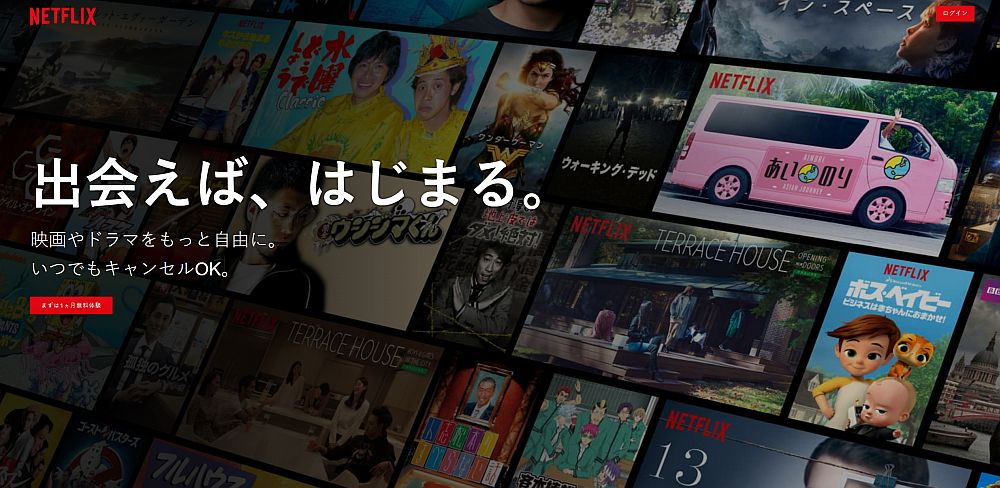The Power of Mobile App Localization: How to Reach Global Audiences

Mobile apps have become an integral part of our lives. From communication and entertainment to shopping and productivity, apps have transformed how we interact with technology.
This reality proves that mobile app development can be an exciting and highly profitable venture. In fact, the app market’s total revenue is estimated to reach $755.50 billion by 2027.

Source: Statista
However, to truly maximize an app’s potential, mobile app localization is essential. It is a powerful strategy for expanding your app’s global presence and connecting with diverse audiences.
In this article, I will dig into the meaning, importance, and key components of mobile app localization. More importantly, I will share some crucial tips on how to localize your app effectively.
Read on to gain insights on how to take your mobile app to new heights!
What is app localization?
App localization refers to the process of adapting a mobile app to cater to the linguistic, cultural, and regulatory needs of a specific target market. It involves more than just translating the language and encompasses multiple aspects to ensure a smooth and tailored user experience.
Key components of a localized mobile app
When it comes to a localized mobile app, several key components play a crucial role in ensuring its success. These include:
- Language translation. Language translation is the cornerstone of mobile app localization. It involves translating the app’s content, including text, labels, menus, and notifications, into the target market’s language. Accurate and culturally appropriate translations are crucial to engage and communicate with users effectively. Leveraging AI translation software can accelerate this process while maintaining high translation quality across various app elements
- Cultural adaptation. Cultural adaptation involves customizing the app’s content, visuals, and features to align with the target market’s cultural norms, preferences, and sensitivities. This includes adapting images, symbols, colors, and functionalities to resonate with local users.
- User interface (UI) and user experience (UX) considerations. To provide an intuitive and seamless experience, localized apps need to consider the UI and UX elements. This involves adapting layouts, button placements, navigation patterns, and overall design to match the user expectations and preferences of the target market.
- Local legal and regulatory compliance. Different countries have specific legal and regulatory requirements that app developers must adhere to when launching a localized app. This includes privacy laws, data protection regulations, and other local compliance standards, such as CCPA in California. Using specialized CCPA software can help ensure that your app complies with these privacy regulations, safeguarding user data and avoiding potential penalties. Ensuring compliance builds trust and credibility with users.
Now that we know the key elements of app localization, let’s look at why you should consider localizing your mobile app.
The Benefits of Mobile App Localization
Localizing mobile apps offers numerous benefits for app developers and businesses looking to expand their global reach. Some of them are:
- Expanded user base and increased downloads. By making your app accessible in multiple languages, you tap into new markets and attract users who prefer to interact in their native language. This expands your user base and increases the potential for higher app downloads and engagement.
- Enhanced user engagement and satisfaction. Localized apps provide users with a personalized and familiar experience, resulting in higher engagement and satisfaction levels. When users can navigate the app effortlessly in their language and cultural context, they are more likely to stay and use it regularly.
- Competitive advantage in local markets. Localization gives you a competitive edge in local markets. By understanding and meeting the specific needs of a target market, you differentiate your app from competitors who may not have localized their offerings. This positions you as a preferred choice for users.
- Increased revenue and monetization opportunities. App localization opens new revenue streams by capturing users more likely to make in-app purchases or engage with monetization models specific to their region. A localized app allows you to tailor your monetization strategies to suit each market’s preferences and spending habits.
How to Conduct App Localization: 5 Best Practices to Boost Success
To ensure a seamless and effective mobile app localization process, here are some best practices suggested by our app development team:
#1 Plan ahead and conduct market research
Before diving into app localization, take the time to identify your target markets and understand their cultural nuances, preferences, and local trends. This research will help you define your localization strategy and determine the level of localization required for your app.
Additionally, a well-researched plan allows you to tailor your localization efforts to meet the specific needs of your market, leading to better user engagement and satisfaction.
Netflix is a prime example of a company implementing a robust localization strategy to cater to a global audience.

Source: Weglot
With its streaming service available in numerous countries, Netflix understands the importance of providing localized, culturally sensitive content and a seamless user experience to appeal to diverse markets.
The global streaming giant invests heavily in providing subtitles and dubbing for its content in multiple languages. This allows users to enjoy movies and TV shows in their preferred language, ensuring they can follow the storyline without language barriers.
Netflix also produces original content tailored to specific regions, known as local originals. These shows and movies are created in collaboration with local talent, reflecting the cultural nuances and interests of the target audience. The company also features top trending titles in specific countries or regions.

💡 It is important to note that such advanced and tailored features are often a product of custom app development. Unlike off-the-shelf or pre-built apps, custom apps are designed and developed to cater to the unique needs of a business or organization.
I encourage you to read our article on custom mobile app development to learn more about the process and how it will grow your business.
#2 Collaborate with professional localization partners
Localization encompasses more than just translation. It involves adapting an app or software product to a specific target market, taking into account linguistic, cultural, technical, and functional aspects.
Translating an app without considering the broader aspects of localization can lead to a subpar user experience and hinder the success of your app in a specific target market.
Therefore, working with professional localization partners specializing in app localization is crucial for a successful outcome. These experts possess the linguistic skills to accurately translate and adapt the app’s content, ensuring it resonates with the local audience.
They can also help you avoid cultural missteps or offensive content that could negatively impact user perception.
Here are some tips to help you choose the right app localization partner:
- Expertise and experience. Look for a localization partner with a proven track record of successfully localizing apps. Consider their expertise in app localization, the number of years they have been in the industry, and their portfolio of past localization projects. As
- Language and cultural knowledge. Ensure that the localization partner deeply understands the target language and culture. They should have native speakers and localization experts who are well-versed in the target market’s nuances, idioms, and cultural sensitivities. This ensures accurate translations and cultural adaptation that resonates with the local audience. For example, if you’re targeting app users in central and southern Europe, you can hire software developers in Romania for a more localized version of the app.
- Quality assurance processes. Inquire about the partner’s quality assurance processes. They should have rigorous methods in place to ensure the accuracy and consistency of translations.
- Technical capabilities. Consider a potential partner’s technical capabilities and ability to handle the technical aspects of app localization. They should be proficient in using localization tools and industry-standard software.
- Market and industry knowledge. Choose a localization partner who understands your target markets and has experience in your industry. This knowledge can contribute significantly to the success of your app localization efforts, ensuring that your app effectively connects with your users and enhances their overall experience.
#3 Pay attention to user interface (UI) and user experience (UX)
Different cultures have distinct design aesthetics and user expectations. When localizing your app, consider your target audience’s cultural and design preferences. This means adapting your app’s visual elements, icons, colors, and imagery to align with the cultural priorities of your market.
UI and UX localization also involves adapting visual and graphic assets such as images, illustrations, and multimedia content. Ensuring that visual elements are culturally appropriate and inclusive helps create a more immersive and relatable experience for app users.
Let’s take the example of the ride-hailing giant Uber and how they prioritize UI and UX during app localization.
Uber’s app interface localization strategy
The globally recognized ride-hailing platform operates in numerous countries worldwide.

Source: Mappr
I particularly choose the app as an example because of its dominance in three regions: USA & Canada, Asia Pacific, and Europe & Africa.
As you can imagine, designing an app that makes sense for regions with such vast geographical and cultural differences can be extremely challenging.
And yet Uber managed to pull through.
When localizing its app for different markets, Uber adapted its UI design to align with each market’s visual preferences and cultural aesthetics. They considered factors such as color schemes, font choices, and iconography that resonate with the local culture.

Source: Fast Company
Uber ensured that all textual content within the app is accurately translated into the local language of each market they operate in. This includes menu options, buttons, notifications, and other user-facing text. The translations are linguistically correct and culturally appropriate, making it easier for users to understand and interact with the app in their native language.
The ride-hailing app also considered factors like local transportation norms, payment options, and user habits. For instance, in certain regions where cash payments are common, Uber introduced cash payment options alongside electronic payment methods to accommodate local preferences.
#4 Perform localization and linguistic testing
Localization testing is crucial to ensure the accuracy and effectiveness of your localized app. It involves thoroughly testing the app across different devices and platforms to identify problems related to its layout, user interface elements, and text display.
For example, if improperly handled, certain languages may have longer text strings that could cause layout problems or text truncation. By testing the app on various devices and platforms, developers can ensure that the app functions smoothly and provides a consistent user experience across different screen sizes and operating systems.
Additionally, you should conduct linguistic testing to ensure accurate app translation and cultural appropriateness of your digital product. This applies to elements within your mobile application and your marketing, app store optimization, and other user acquisition efforts.
#5 Ensure local legal and regulatory compliance
Each country has legal and regulatory requirements that you must adhere to when launching a localized app. This includes understanding the following:
- Data protection and privacy laws
- Consumer protection regulations
- Intellectual property rights
- User consent
- Age restrictions
- Payment regulations
- Other relevant legal frameworks and compliance standards
For example, in the European Union, the General Data Protection Regulation (GDPR) requires companies to be transparent about collecting and using personal data.
Businesses must provide clear and easy-to-understand privacy policies that explain what data is being collected, how it will be used, and who it may be shared with. Companies must also obtain explicit consent from individuals before collecting their data and have valid reasons for doing so.
You should familiarize yourself and align your app localization efforts with these regulations to avoid potential legal consequences, protect user trust, and maintain a positive reputation in the market.
Additionally, monitoring updates is essential to keep up with evolving legal landscapes and regulation changes. This proactive approach helps you stay compliant and adapt localization efforts accordingly.
A crucial factor to consider in this process is the cost of ISO 27001 certification, as understanding it helps organizations budget effectively while implementing the necessary compliance measures.
Go local, reach global
In today’s globalized world, mobile app localization is no longer just an option but a necessity.
From language translation and cultural adaptation to UI/UX considerations and local legal compliance, every aspect of localization plays a crucial role in user engagement, satisfaction, and business success.
Embrace mobile app localization to expand your app’s horizons and reap the rewards of a truly global user base.
And if you need a mobile app development partner equally passionate about forging a path toward global success, reach out to Appetiser today!
People also ask
- What is mobile app localization?
Mobile app localization is the process of adapting your app to feel native in different markets. It goes beyond simple translation. You adjust the language, design, content, imagery, payment systems, and even legal compliance so users feel the app was built for them.
- Why should I localize my mobile app?
Simply put, users ignore apps that feel foreign. Imagine opening a restaurant in Tokyo and serving the menu only in English. That’s how most apps feel to users who aren’t in your home market. No wonder 90% of online shoppers say they prefer browsing in their native language.
- How do I localize my mobile app?
Start with the basics. Translate the text, refine the design, and tailor the content. But real impact comes when you think like a local. Colors, icons, date formats, and even button placements can make or break the user experience. Don’t stop at language. Adjust for cultural quirks, preferred payment methods, and local laws and regulations.
- How much does it cost to localize an app?
Costs vary by app size and complexity. A small app with 10–20 screens might cost a few thousand dollars, while a large, content-heavy app targeting multiple languages can run tens of thousands. Apps that localize see 38% more downloads (BrowserStack).
- How is localization different from translation?
Translation swaps words from one language to another. Localization asks bigger questions: Will this color offend users? Should the tone be formal or casual? Which payment methods are popular here? Translation is a single piece of the puzzle. Localization is the entire picture.
- When should I localize my app?
The best time is during MVP planning. This saves you from expensive retrofitting later and ensures smoother UX. If you have already launched, start with the markets that show the most promise and expand gradually.
- Which markets should I localize my app for first?
Start with markets where your users already are or where demand is high. Look at download data, revenue potential, and competition. These are the places where localization will have the fastest, measurable impact.
- Can I get in trouble for not localizing my app?
Yes. Non-compliance with local privacy or payment laws can result in fines or removal from app stores. Localization isn’t just language — it’s following the rules where your users live (Ciklopea).
- What legal rules should I know when localizing an app?
Data privacy, age limits, and in-app purchase laws vary by country. Some require consent for tracking, others restrict kids’ data, and some mandate certain payment options. Knowing these rules avoids fines, keeps your app accessible, and builds user trust
- How do I handle UI and UX challenges in localized apps?
Expect text to be longer or shorter in different languages, right-to-left layouts, and culturally specific icons. Always test with real users in the target region, because what fits neatly in English might overflow buttons or disrupt layouts in German, Chinese, or Arabic.

Jane Eslabra has 14+ years of experience producing content across traditional and digital platforms. She channels her strong passion for fostering tech startup growth through knowledge sharing.


